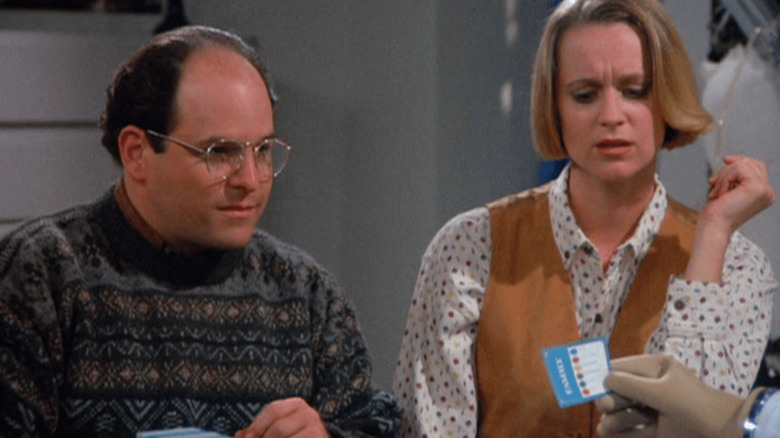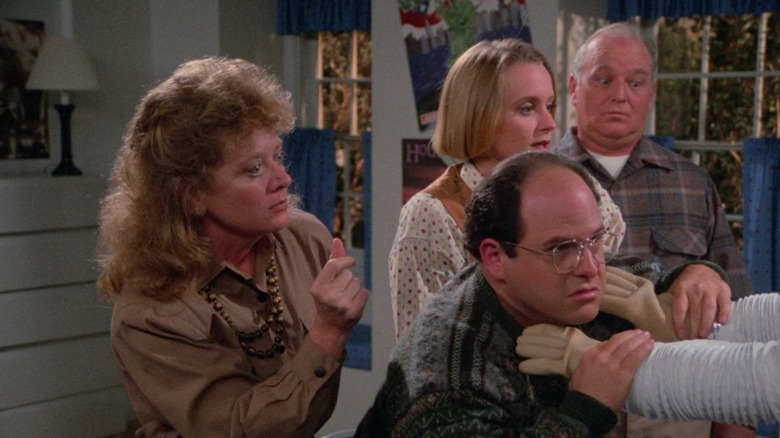Within the “Seinfeld” episode “The Bubble Boy” (October 7, 1992), George (Jason Alexander), his girlfriend Susan (Heidi Swedberg), Jerry (Jerry Seinfeld) and Elaine (Julia Louis-Dreyfus) go on a street journey to a lakeside cabin in upstate New York belonging to Susan’s mother and father. Earlier than they go, although, Jerry is stopped by a person in a espresso store who acknowledges him (Jerry is a well-known comic within the universe of the present). The person entreats Jerry and his pals to go to his son Donald (Jon Hayman), who would recognize a go to from a celeb. Donald is delicate to germs and has to stay in an hermetic plastic tent to keep away from getting sick. Jerry, being very impolite, instantly begins calling the child “Bubble Boy.”
When the street journey lastly begins, George is a street warrior, and pushes via the journey as shortly as attainable. He arrives at Donald’s home early. The additional time forces George and Susan to move the time by enjoying Trivial Pursuit with Donald, which is his one true ardour. Donald is rarely seen on digital camera, however his gloved fingers will be seen in body manipulating a Trivial Pursuit board. Donald, George finds, is extremely impolite and smug, bragging about his trivia expertise. George hates him straight away, however agrees to play the sport. Naturally, George finally will get defensive, and finally turns to mocking the boy within the plastic bubble. Did I point out that the characters on “Seinfeld” are all horrible individuals?
Jason Alexander, as he revealed on the particular options for the episode’s DVD, sort of hated “The Bubble Boy.” The episode got here throughout the present’s fourth season, and Alexander felt that it was a little bit too high-concept for its personal good. Most “Seinfeld” episodes had been derived from recognizable, on a regular basis neuroses. “The Bubble Boy” was, he felt, formally situational comedy. It was an indication for the actor that “Seinfeld” was failing.
Jason Alexander felt that The Bubble Bay was too high-concept
This is how Alexander described it on the DVD particular options:
“‘The Bubble Boy’ is the proper instance of every thing that you simply should not be doing. As a result of initially, the place are we? A bubble boy? We’re doing an episode a few bubble boy? Guys! We was once about little tiny issues. A bubble boy? So initially, the entire idea of the episode appeared flawed to me. Then, who do they forged? They forged our author, Jon Hayman, a 50-year-old man (…) who seems like a 50-year-old man. We’re enjoying Trivial Pursuit? This is not … it isn’t our present.”
Alexander does not say it, however he clearly felt the idea was too complicated for “Seinfeld,” a sequence that’s extra sometimes about on a regular basis foibles and the best way horrible individuals react to them. “Seinfeld” eschewed a whole lot of conventional sitcom tropes, not least of which was the format’s “situational” ethos. The conditions on “Seinfeld” had been sometimes non-incidents or banal occasions. “The Bubble Boy” was, in Alexander’s eyes, too excessive. (It didn’t make our checklist of the 15 finest “Seinfeld” episodes.)
Episode writers Larry Charles and Larry David did discover a manner into that “on a regular basis” notion in “The Bubble Boy,” after all. Within the climax of the episode, George finds a typo on one of many Trivial Pursuit playing cards that reads “The Moops” as a substitute of “The Moors.” As a result of he’s dropping so badly, he will not let Donald have it, regardless that he knew the right reply. George stands his floor, and appears like an entire a-hole within the course of. Regardless of the excessive idea, there was nonetheless a strategy to deliver out George’s pettiness. All of them stay in a hell of their very own building.
Ultimately, Alexander got here round, admitting that “The Bubble Boy” wasn’t a lot a “soar the shark” second because it was a strategy to push the envelope. “One other nice instance,” he stated, “of me flawed, them proper.” It takes a giant man to confess that.



